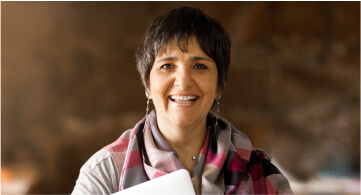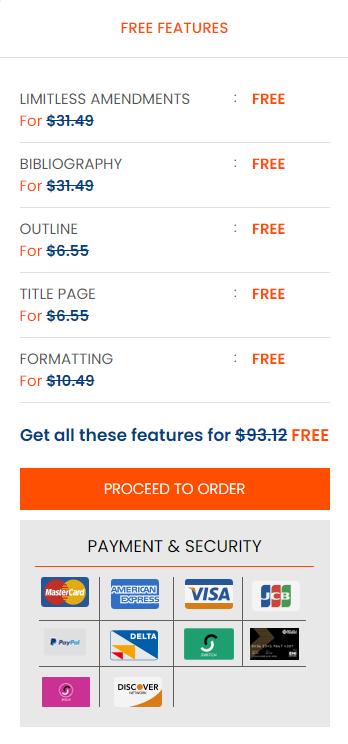Overview
Admissions and registration offices, career centers, libraries, computer and engineering labs, makerspaces, housing and food services, tutoring centers, and other student services contribute to the education and academic/career success of all students. Therefore, ensuring that these services are welcoming to, accessible to, and usable by students with disabilities should be a high priority for every institution. This module explores both accessibility barriers and solutions relevant to student service organizations.
By the end of this week you will be able to
a) list examples of services on a postsecondary campus that can maximize their impact through the adoption of more inclusive practices.
b) describe components of the UDHE Framework—definition, principles, guidelines, practices, and processes—with respect to campus services.
c) name the three sets of principles that underpin the UDHE Framework.
d) apply the process of UDHE to create inclusive practices for campus services.
e) list UDHE practices for making services more inclusive.
f) provide examples of how UDHE can minimize the need for accommodations within a service unit.
g) describe how staff can work effectively with the disability services office to accommodate a person with a specific disability in their service unit.
UD of Student Services
Adjusting the basic definition of UD, we can come up with the definition of the UD of student services to be “the design of student service activities, information resources and environments to be usable by all people, to the greatest extent possible, without the need for adaptation or specialized design.â€
In a student service unit (e.g., career services) UD can be applied to:
a) Planning, policies, & evaluation
b) Physical environments/products
c) Information resources/technology
d) Staff training
e) Events
Examples of UD practices in student services include:
a) Policies and procedures ensure access to facilities, printed materials, computers, and electronic resources for people with disabilities.
b) Pictures in publications/websites include people with obvious disabilities.
c) There are ample high-contrast, large-print directional signs to & throughout the office.
d) Part of a service counter is at a height comfortable from a seated position.
e) Aisles are wide & uncluttered.
f) Staff know how to arrange for accommodations.
VIEW the following video and READ the accompanying publication to learn more. Equal Access: Student Services (Links to an external site.)Links to an external site. OR http://www.washington.edu/doit/videos/index.php?vid=11&s=student+service The Center for Universal Design in Education includes a series of checklists for applying UD to:
Recruitment & Undergraduate Admissions
a) Libraries
b) Registration
c) Financial Aid
d) Advising
e) Career Services
f) Housing & Residential Life
g) Tutoring & Learning Centers
h) Computer Labs
i) Engineering Labs
The checklists can be found at the link below. READ at least (2) two of them thoroughly to prepare for the exercise.
Applying Universal Design to Specific Student Service Units (Links to an external site.)Links to an external site. OR https://www.washington.edu/doit/programs/center-universal-design-education/postsecondary/universal-design-student-services/applying
READ the following article from the online book Universal Design in Higher Education: Promising Practices
Development of a UD Checklist for Postsecondary Student Services (Links to an external site.) OR https://www.washington.edu/doit/development-ud-checklist-postsecondary-student-services OR – SEE ATTACHED PDF
READ textbook Chapter 6. – SEE ATTACHED PDF
This chapter reviews some content we have covered thus far and fills in some gaps to present a more complete overview of how to design student service units to be welcoming to, accessible to, and usable by students with disabilities and other visitors.
READChapter_12_Burgstahler_Universal_Design_in_Higher_Ed_2E_tagged.pdf – SEE ATTACHED PDF
for views of administrators of student services organizations.
VIEW the following video to see how UD can be applied in all aspects of a project or service, in this case to Engineering Research Centers funded by the National Science Foundation.
Engaging Individuals with Disabilities in an Engineering Research Center (Links to an external site.)Links to an external site. OR http://www.washington.edu/doit/videos/index.php?vid=70
(c) 2017- Sheryl Burgstahler. All rights reserved.
UD and Disability Service Units
How might UD if at all impact the services and operation of a disability service office for students, faculty, staff, and/or visitors?
Let’s start by reading the publication at the link below for examples of types of accommodations typically offered to students through a disability services unit. Note: that this short publication was developed in collaboration with multiple campuses and is in a format that can be modified for use on any campus. Working Together: Faculty and Students with Disabilities (Links to an external site.) OR https://www.washington.edu/doit/working-together-faculty-and-students-disabilities
Postsecondary institutions asked the collaborative team that developed this publication to create a similar document for teaching assistants. We were reluctant at first because we felt that the advice would be the same. However, we learned that individuals stakeholder groups like content that is tailored to their audience; their name on the cover makes this clear. We created the following document. Notice that it is almost identical to the one for faculty. Can you spot the differences?
Working Together: Teaching Assistants and Students with Disabilities (Links to an external site.) OR https://www.washington.edu/doit/working-together-teaching-assistants-and-students-disabilities
VIEW the video from the link below to get a sense of how the disability services office can effectively work with faculty to ensure that course content and activities are accessible to students with disabilities. Building the Team: Faculty, Students and Staff Working Together (Links to an external site.) OR http://www.washington.edu/doit/videos/index.php?vid=3&s=Building+the+Team vid=3&s=Building+the+Team
Clearly, for a disability services office to best serve students with disabilities, it must be collaborative. Staff needs to work with those who work directly with students—including faculty, teaching assistants, student service and other campus units, parking and facility personnel, administrators.
During their many interactions campus-wide, disability service personnel may have opportunities to promote UD practices that could benefit more people than those who specifically request accommodations. For example, they could encourage the staff employment office to ensure that application forms and processes are fully accessible to anyone applying for a job, including those with disabilities. Disability service staff could also encourage teaching and learning centers and professional organizational development units to include UD in their training opportunities, perhaps offering to present or co-present this specific content in a training session. They could promote the procurement, design, and use of accessible technology campus-wide. And, like with any other service unit, UD strategies can be employed in all of its resources and services to ensure that all students with disabilities feel welcome and can effectively make use of the services offered.
In summary, although a typical disability service unit has as its primary function to ensure that students, faculty, staff, and/or visitors with documented disabilities have reasonable accommodations, they can apply UD to make their own facilities and services welcoming, accessible, and usable and become an agent of change by encouraging other units to do the same.
(c) 2017- Sheryl Burgstahler. All rights reserved.
PART 1 (1 Page): Share 2 (separate) examples of what the campus as a whole could do that would potentially reduce the accommodation needs of specific students with disabilities. Include a REFLECTION/ANALYSIS OF 100 – 150 WORDS (1 page Total)
Be sure to include references, in APA format
Your responses should be SUBSTANTIVE (but, not overly exhaustive when appropriate): they should demonstrate a serious engagement with the text(s)/video(s), etc. all claims you make should be fully and completely explained and claims about what the text says should be backed with PROPER quotations and/or evidence from the text and or reflections of the videos. Be sure to provide enough reference information in your responses so that we can find the page/quotation/etc. that you are referring to or discussing in your responses. YOU MAY NOT USE ANY OUTSIDE SOURCES – ONLY WHAT IS PROVIDED.
PART 2 (1 Page): Share why, compared to applying an accommodation-only approach to provide access for individuals with disabilities, the UD approach requires greater collaboration between campus units. Give at least 2 (separate) examples of specific units that must work together to effectively promote UD. Include a REFLECTION/ANALYSIS OF 100 – 150 WORDS (1 page Total)
Be sure to include references, in APA format
Your responses should be SUBSTANTIVE (but, not overly exhaustive when appropriate): they should demonstrate a serious engagement with the text(s)/video(s), etc. all claims you make should be fully and completely explained and claims about what the text says should be backed with PROPER quotations and/or evidence from the text and or reflections of the videos. Be sure to provide enough reference information in your responses so that we can find the page/quotation/etc. that you are referring to or discussing in your responses. YOU MAY NOT USE ANY OUTSIDE SOURCES – ONLY WHAT IS PROVIDED.







